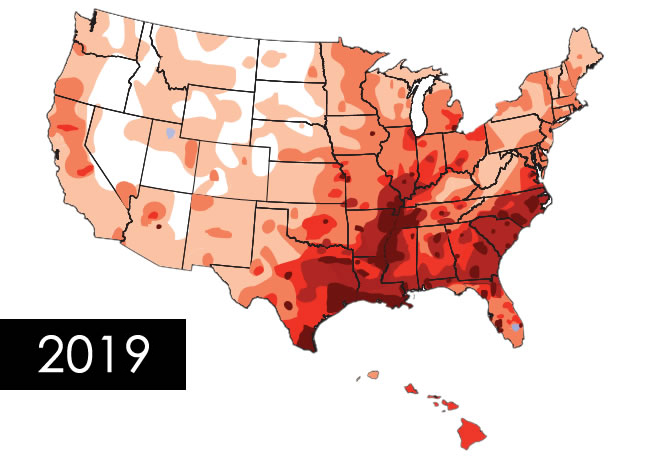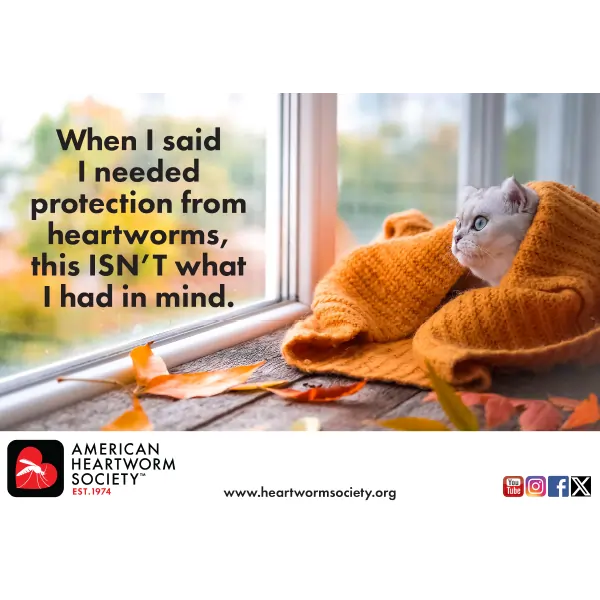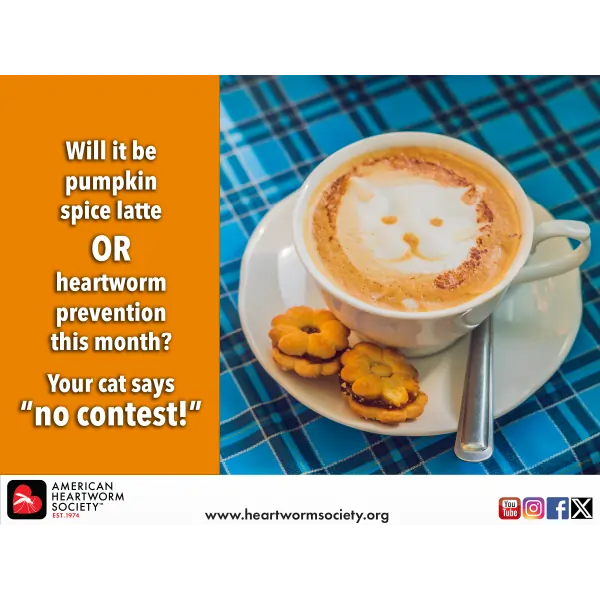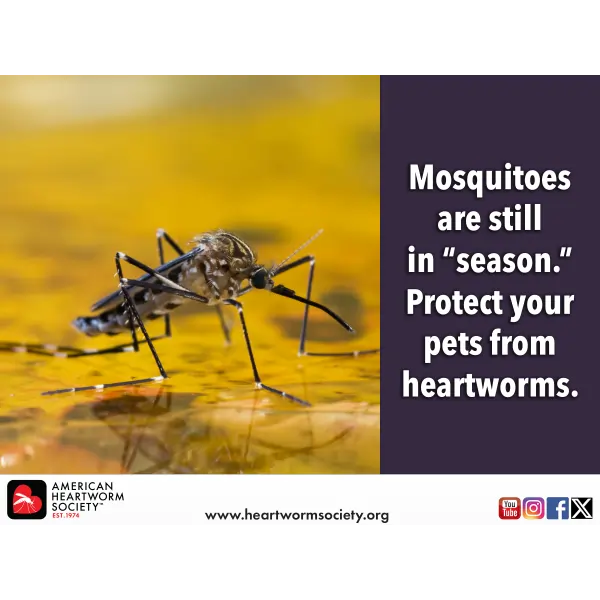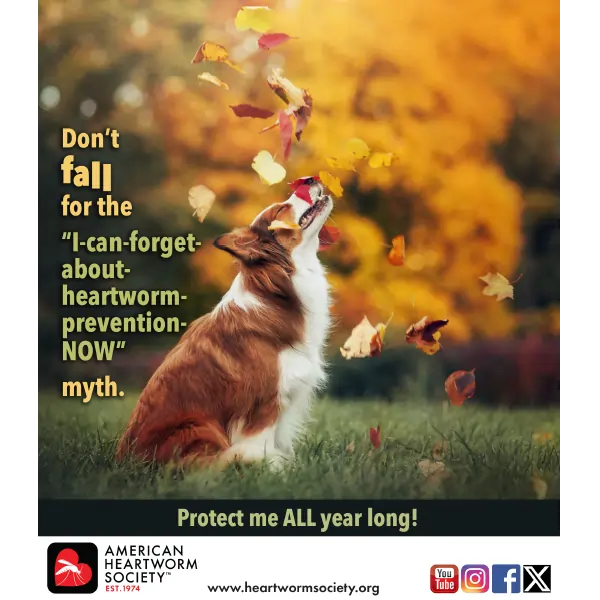AHS Announces Findings of 2019 Heartworm Incidence Survey
New incidence map shows nationwide cases, confirming need for improved prevention
Wilmington, DE (April 20, 2020)— The American Heartworm Society (AHS) announced the results of the 2019 AHS Heartworm Incidence Survey and unveiled a new heartworm incidencemap drawn from the data of nearly 6,000 U.S. veterinary practices and shelters last year. The conclusion: in spite of the challenges of the current pandemic, 2020 is no time for veterinary practitioners to deemphasize the importance of heartworm prevention.
Mississippi and Louisiana lead the country in heartworm infection rates
No state in the U.S. was heartworm-free in 2019, according to the AHS survey, which determined that the top five states in heartworm incidence were Mississippi, Louisiana, South Carolina, Arkansas and Alabama—all states that have been in the top tier since the AHS began tracking incidence data in 2001. In Mississippi, almost 10 percent of dogs tested for heartworms were heartworm-positive in 2019; in Louisiana, just under 8 percent of dogs tested were positive.
Rounding out the top ten states were Texas, Tennessee, Georgia, North Carolina and Oklahoma. Texas and Tennessee both dropped out of the top 5 ranking between 2016 and 2019, with Alabama and South Carolina moving up. Florida, meanwhile, fell off the top-10 list and was replaced by Oklahoma.
“When veterinarians compare the 2016 heartworm incidence map to the 2019 map, it’s clear that the big picture hasn’t changed,” said AHS president Chris Duke, DVM. “The Southeast remains a hotbed for heartworm infection, but states in the Northeast, Midwest and West have continued to see many cases as well.”
Dr. Duke noted that incidence trends typically vary from year to year due to factors such as weather conditions. “Droughts can lead to declines in infections, while weather events such as hurricanes can trigger incidence spikes as a result of exponential growth in mosquito populations,” he noted. “Meanwhile, the movement of pets from heartworm-endemic areas of the country to less-endemic areas can be problematic if guidelines on transport of heartworm-positive animals are not followed.”
AHS survey cites insights behind the numbers
The AHS Heartworm Incidence Survey is conducted every three years, using data from animals tested over the previous 12 months. The 2019 survey reflected data from more than 5.5 million heartworm tests conducted over the course of a year.
Meanwhile, the survey polled veterinarians on trends noted in the previous three years. Findings from that survey included:
- Eleven percent of veterinary practices and shelters surveyed reported seeing no heartworm cases, compared to approximately 13 percent three years ago.
- When asked whether they perceived the trend of heartworm incidence to be up or down over the previous three years, 26 percent of veterinarians saw an upward trend, while 16 percent noted a downward trend and 57 percent of practices and shelters saw no change.
- Respondents who reported an upward trend were most likely to cite “an influx of heartworm-positive patients into their practice area and “poor compliance” (pet owners failing to administer heartworm preventives year-round and/or skipping doses).
- Respondents who noted decreases in heartworm incidence cited “improved preventive compliance among users” and “more owners giving heartworm preventives” as the leading reasons.
- 82 percent of veterinarians surveyed stated that they follow the AHS guidelines on heartworm prevention, testing and treatment.
COVID-19 crisis punctuates need for heartworm vigilance
While the COVID-19 crisis has temporarily limited the ability of many veterinary practices to conduct routine patient health screenings, Dr. Duke stressed that a temporary delay in heartworm testing in 2020 should not lead to lapses in heartworm preventive administration.
“The need for heartworm prevention is more important than ever. Prevention continues to be one of the most important recommendations veterinary practitioners can recommend for patient care, and avoiding gaps in year-round prevention is essential,” Dr. Duke concluded.
Veterinarians seeking guidance on adapting protocols for heartworm prevention, testing and treatment during the COVID-19 crisis can access the AHS’recommendationson heartwormsociety.org.
About the AHS
Founded during the Heartworm Symposium of 1974, the American Heartworm Society (AHS) aims to further scientific progress in the study of heartworm disease, inform the membership of new developments and encourage and help promote effective produces for the prevention, diagnosis and treatment of heartworm disease.



